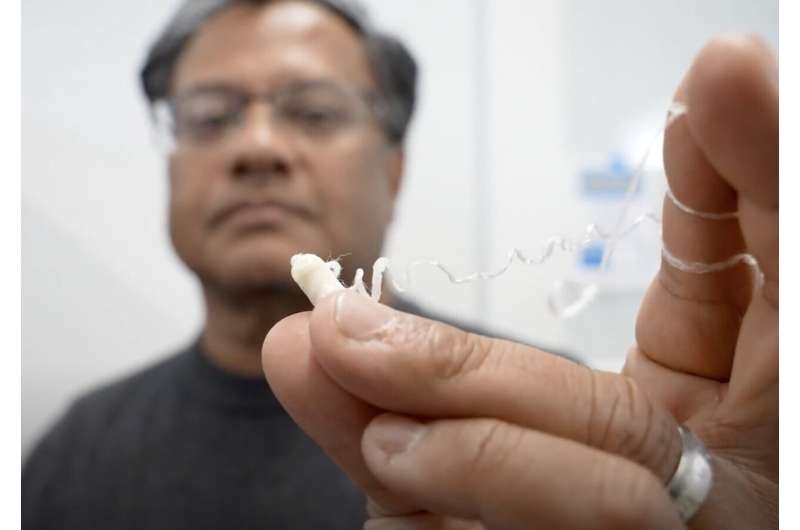Doctors pioneer non-invasive ‘string test’ for sedation-free upper gastrointestinal monitoring


Children’s Hospital Colorado (Children’s Colorado) has announced a new, care-changing test designed by its physicians to monitor inflammation of the gastrointestinal (GI) tract by painlessly collecting samples while the patient remains awake and alert, saving patients more costly and invasive testing that includes having to receive anesthesia.
“I began this project when I joined Children’s Colorado in 2007,” said pediatric gastroenterologist Glenn T. Furuta. “We knew there had to be options to save our patients from having to go under anesthesia in order to obtain results that would tell us much-needed information about their conditions. We are thrilled at the outcome of this product and the real changes in care this will provide not just our patients, but patients across the country as this technology becomes available for other hospitals to use. It’s truly a game changer in the delivery of care.”
The EnteroTracker—commonly referred to as the “string test”—was developed by Children’s Colorado pediatric gastroenterologist Glenn Furuta, M.D.; Robin Shandas, Ph.D., professor and chair of bioengineering at the University of Colorado Denver, College of Engineering and Applied Science; and Steven Ackerman, Ph.D., a professor of biochemistry at the University of Illinois College of Medicine at Chicago.
The EnteroTracker provides low-cost, accurate analysis of esophageal content and identifies the presence of esophageal inflammation, allowing for monitoring the effectiveness of treatment. The test is simple. A patient simply swallows a secured capsule that is composed of a specialty string. As it makes its way to the small intestine, it continues to unravel. In just minutes, a clinician can gently remove the string and after sending to our labs at Children’s Colorado can quickly identify sections of the string that correspond to regions of the GI tract, using pH and distance markings.
https://youtube.com/watch?v=-zBQyH3gHc0%3Fcolor%3Dwhite
Source: Read Full Article